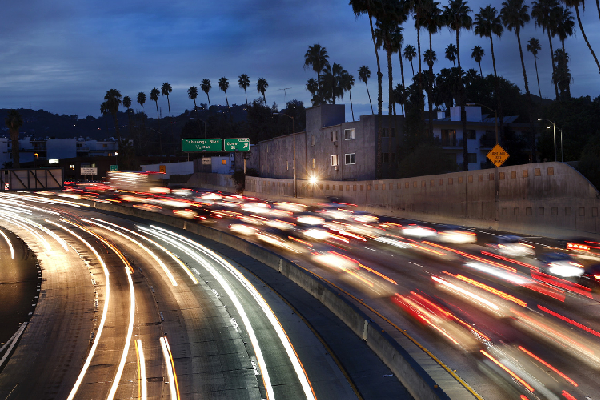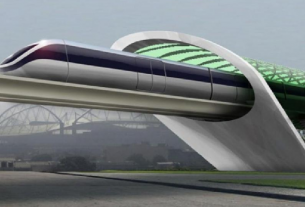First blazed by pre-European inhabitants in lower Manhattan, the Wickquasgeck Trail, scarcely resembles its origins. The Dutch, calling it Heerestraat, established the route as Manhattan’s main thoroughfare. A Broadway Street shows up on a map in 1776. By 1899, Broadway referred to the entire length of the road that is well known in today’s folklore.
The road’s uses changed over the decades, from pedestrian traders and hunters, to horses, carts, wagons, streetcars, and buses for commuting and trade. Revolutions in power generation and distribution allowed Broadway to become a “Great White Way” lighting the way for the high-tech taxis and private automobiles of the new twentieth century. Now in places like Times Square, Broadway is dominated by pedestrians again.
These processes are natural. Transport needs evolve with technology and respond to preferences. Railroad use in the US peaked in the 1920s; it declined in importance for almost a century — the internal combustion engine, trucks, cars, airplanes, and highways were no small part of that. Urban transit, mostly in the form of electric streetcars and then buses, saw a similar rise in the late 18th and early 19th century. It also peaked in the 1920s, but fell off a cliff in the post-War era. Today’s revolutions in communications, sensors, and software are rudely waking the sleepy industries of auto manufacturing, road building, and civic management.
There is mounting evidence that the car—as Americans have come to love and hate it—might be next. The story of Broadway will be writ large as forward-looking cities and towns reconfigure streets and roads to more efficiently use available space.
Travel in general, and by auto in particular, has remained relatively flat for over a decade (notably, dating from before the recent Great Recession). More importantly, it has been declining on a per capita basis. Given the rise of travel and automobility for the entire twentieth century, this is a remarkable shift into reverse. We attribute it to multiple factors:
- Demographic shifts — the population is aging, increasingly immigrant, and labor force participation continues to fall
- Energy costs — which have become increasingly volatile
- The economy as a whole — which has been far from roaring
- Changing preferences as youth increasingly value mobile communications over daily mobility
- Differences in cultural norms both generational and ethnic
- The changing nature of working, shopping, and socializing associated with the rise of personal computers, the internet, and mobile smartphones.
Dematerialization and virtualization will not completely replace physical presence any time soon, but we expect continued substitution of information and communication for physical transport, especially in rush hour.
The car, referring to transport for an individual in an enclosed, externally powered capsule, might be here to stay. But how the car is used, owned, and driven will change. These changes open up opportunities to achieve greater efficiency from each square inch of pavement.
At ted.com they state that driverless or autonomous vehicles (AVs), with technology advances on a daily basis, are real. As the technology matures, AVs will increasingly replace human control over the vehicle. Once their number reaches critical mass, AVs can follow each other more closely than humans ever could, thereby increasing throughput (AVs per hour per lane). They will also travel far more predictably, meaning more, but narrower, lanes for a given-sized vehicle.
Most trips around town involve a single individual. They can be satisfied with a fleet of AVs that mostly seat only one person, and far fewer that seat four or six or eight. Carsharing, already uncouples vehicle use from vehicle ownership. Combine carsharing with with AVs, and cars and trucks need not be purchased for the extreme event (once a month or once a year use), but instead the best vehicle for a given trip will be easily rented, and deliver itself to you in a few minutes, when needed. Solo passenger AVs take up far less space on the road than than the 12 or 13 feet typically allotted to lanes now.
Today, an enormous amount of space is wastefully devoted to on-street parking — the storage of private cars on public roads. AVs can provide door-to-door service and cars can be parked further away, where land is less valuable. They can be summoned on-demand, even for children who need to attend soccer practice across town. Further, new autonomous rental cars will be in motion more often, so fewer cars can provide the same service, requiring still less parking.
Eyeing technological advances with current trends, thenextweb.com envisions scenarios that are in stark contrast to the conventional planning done by most governments and industry trade groups. In short, we conclude that the US should largely stop building new roads and widening existing ones. Instead communities ought to gracefully abandon excess lanes on underutilized or redundant roads. All of this points to shrinking the size of remaining roads, managing those roads better with location-specific, time-of-day pricing, and reducing the share of the surface of those roads devoted to the car.
Call it what you want, rationalizing or right-sizing. Designs for streets and roads will need to respond to a Cambrian explosion of vehicle types and new patterns of use. Some of these changes will foster use of the oldest and greenest of transport modes: walking and bicycling. Notable efforts are underway in many communities across the country to lower the barriers to cycling use via safer, physically separated, bike lanes, coupled with new bikesharing systems that enable mobility on demand. Other initiatives include allocating roadspace to move people rather than storing vehicles. It means prioritizing buses over cars. The upshot is that places can continue to make more efficient use of existing space.
In an era of flat demand and increasingly efficient supply, America and other developed countries can reinvent roadway space. With the knowledge of ongoing technological change and increasing efficiency of existing resources, the time is now to adopt a strategy of no new roads. While cars move fast, and electrons move faster, roads don’t move at all. They last for hundreds and thousands of years.
The enormous asphalt and concrete monuments of the 20th century are liabilities for the 21st that, in part, contribute to heat island effects and the inventory of impervious surfaces. For any mile of road or street added, more than a mile should be decommissioned. To position themselves for the future, towns, cities, counties, and states should devote scarce transport funds to better maintain, reconstruct, and adapt street space in a way that responds to evolving transport contexts, serving people, not vehicles. While the rights-of-way occupied by roads aren’t going anywhere—look at Broadway—how society chooses to use them is—again, look at Broadway.



